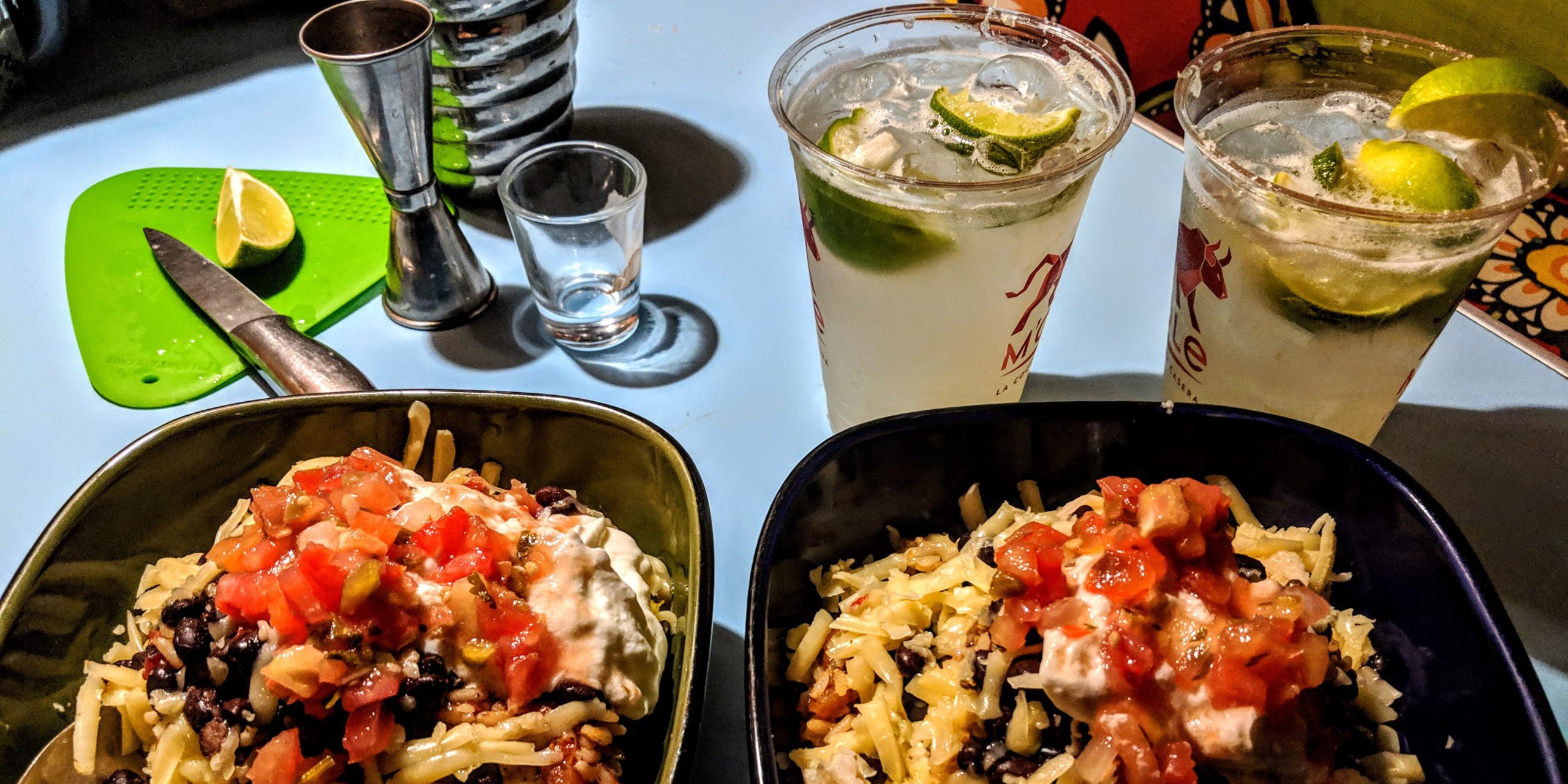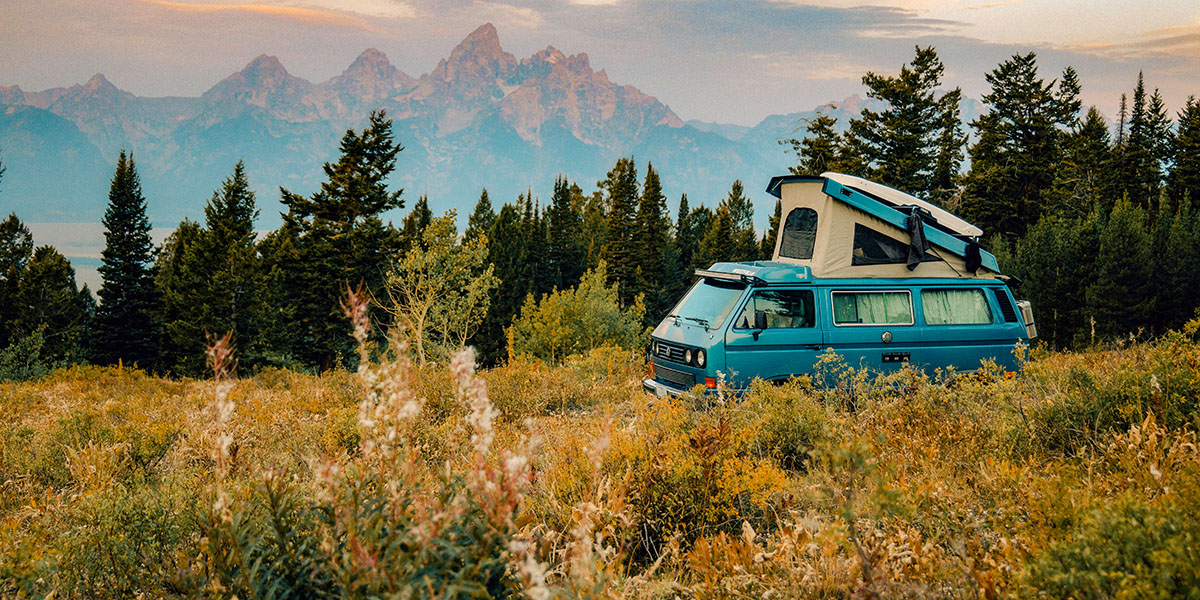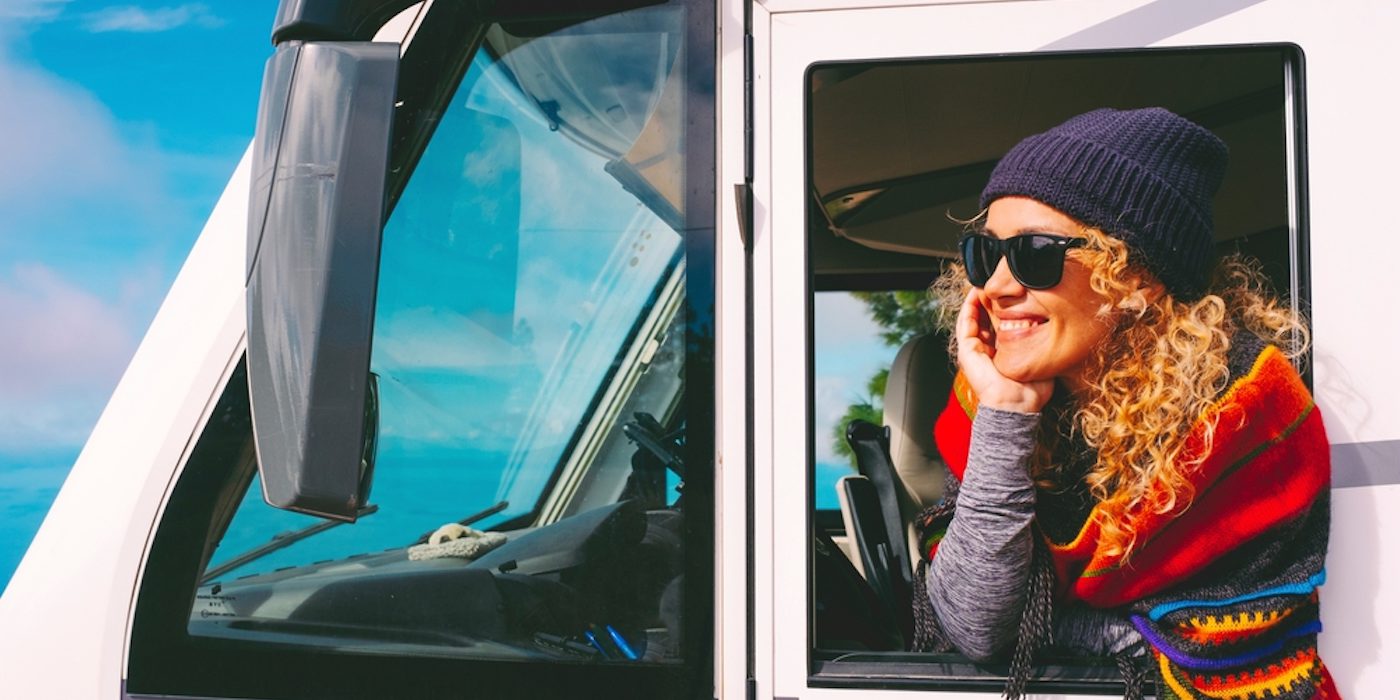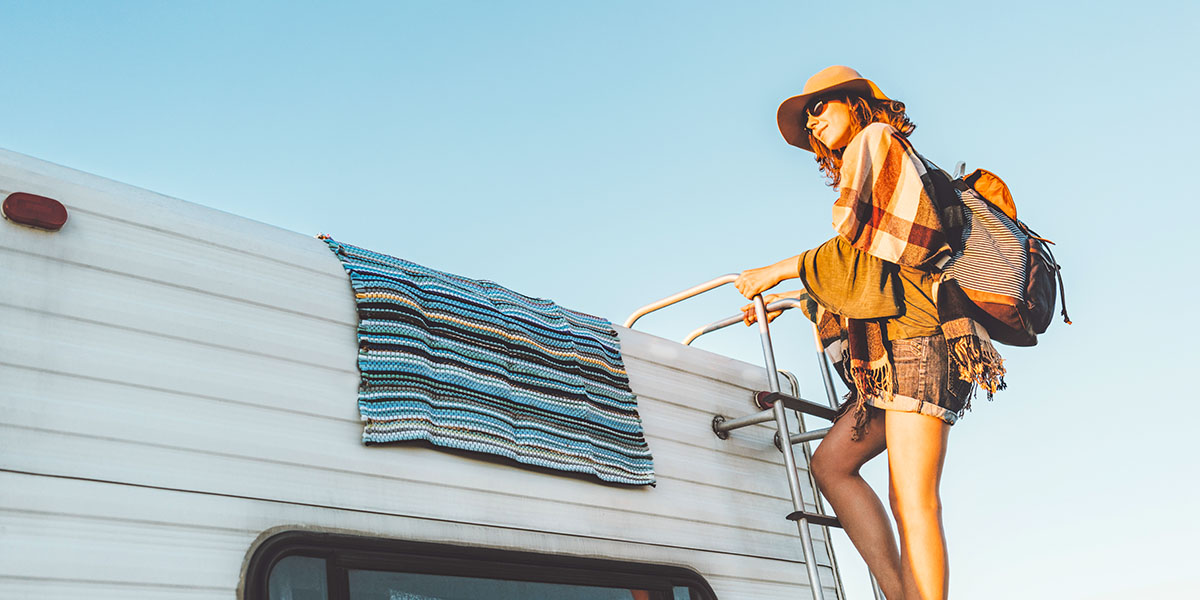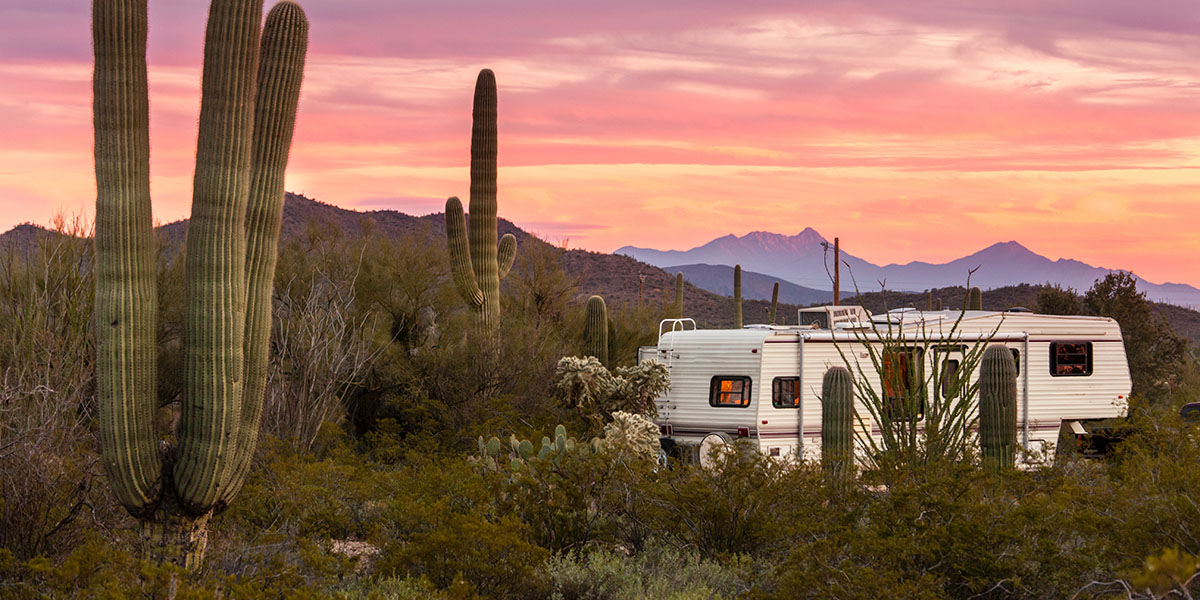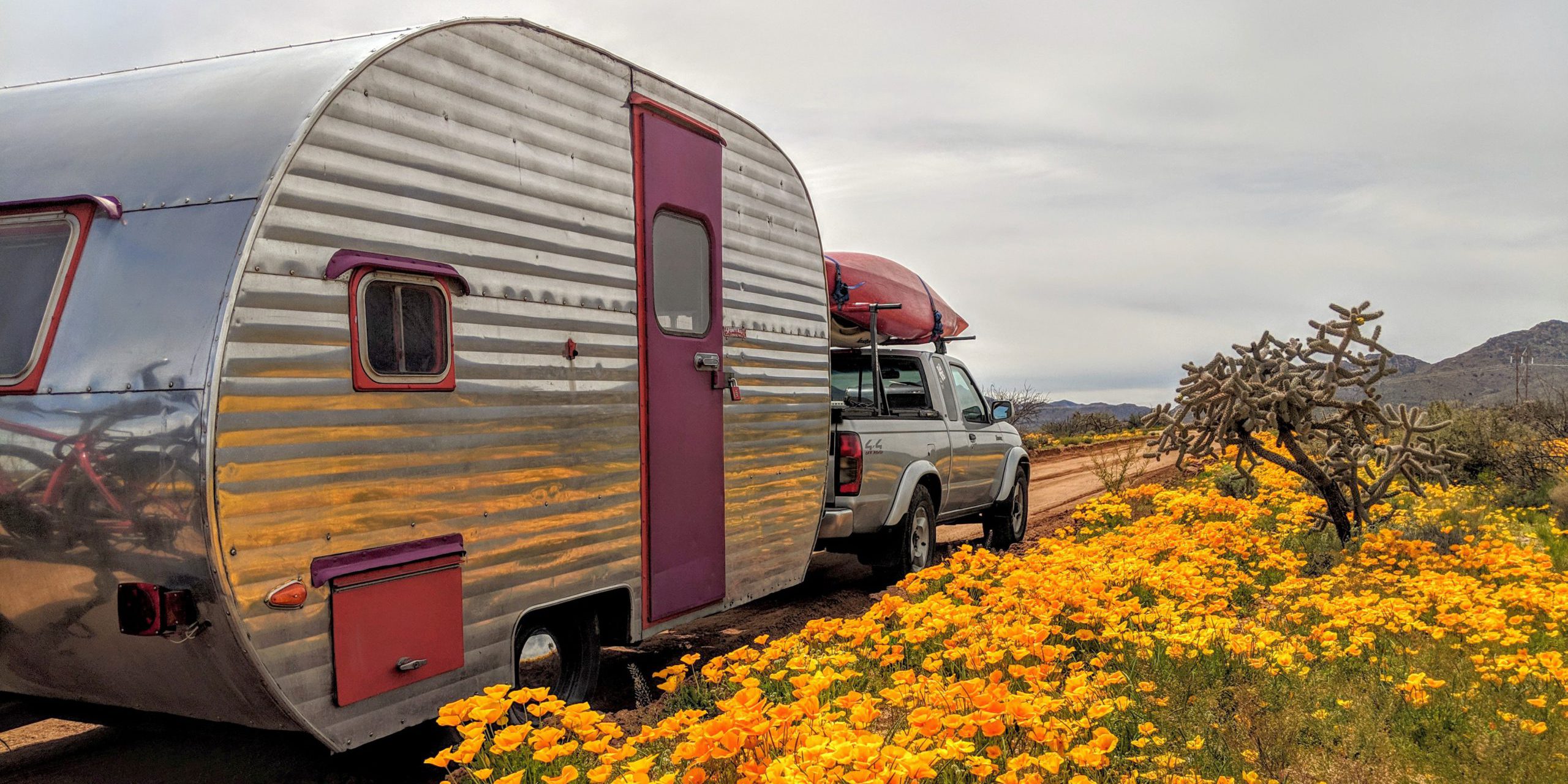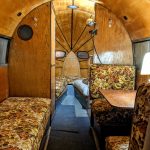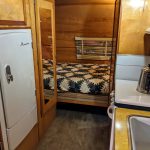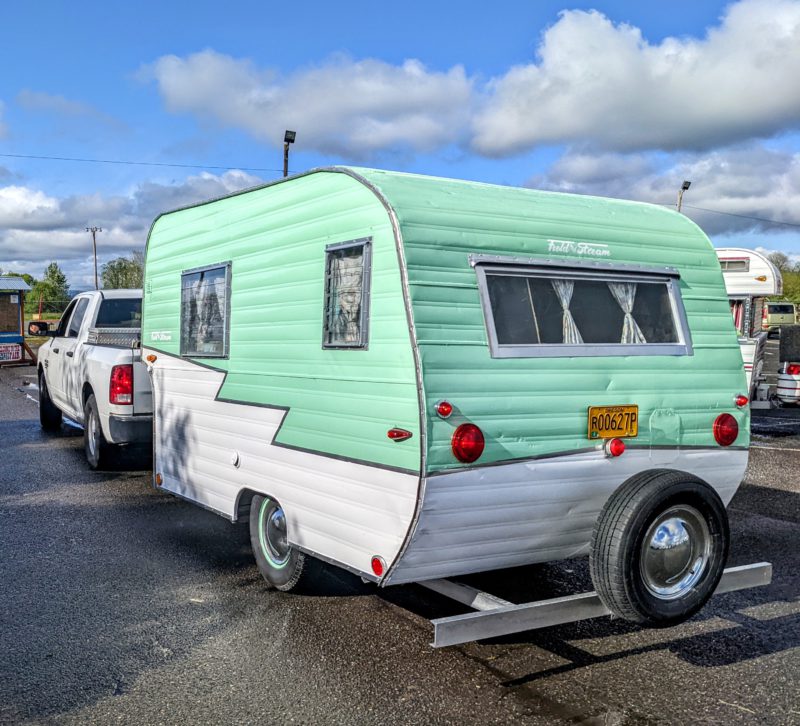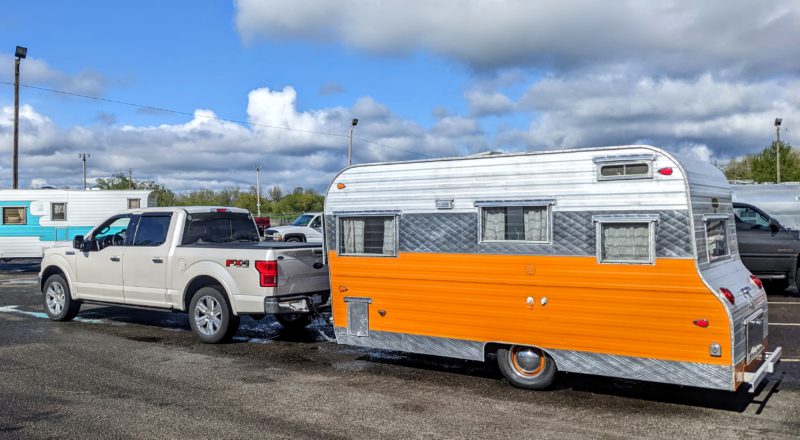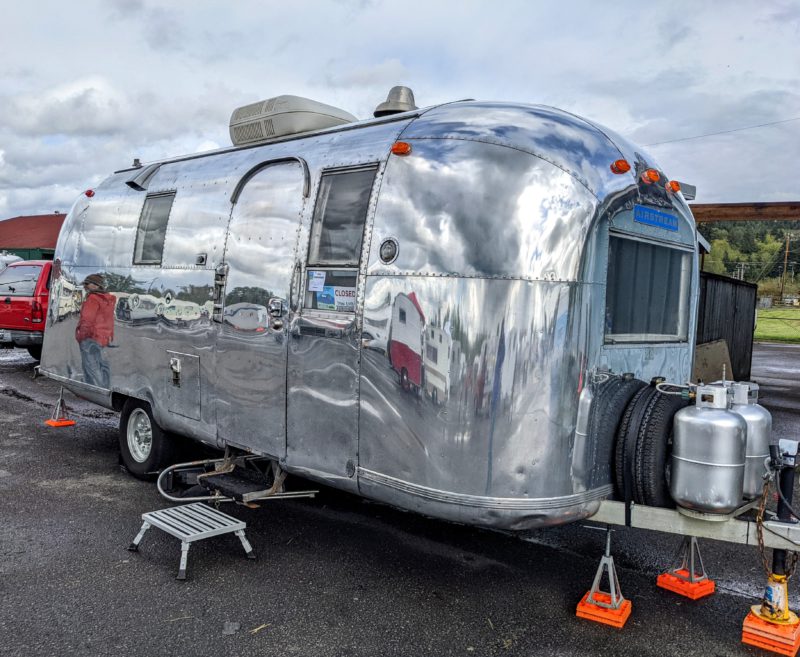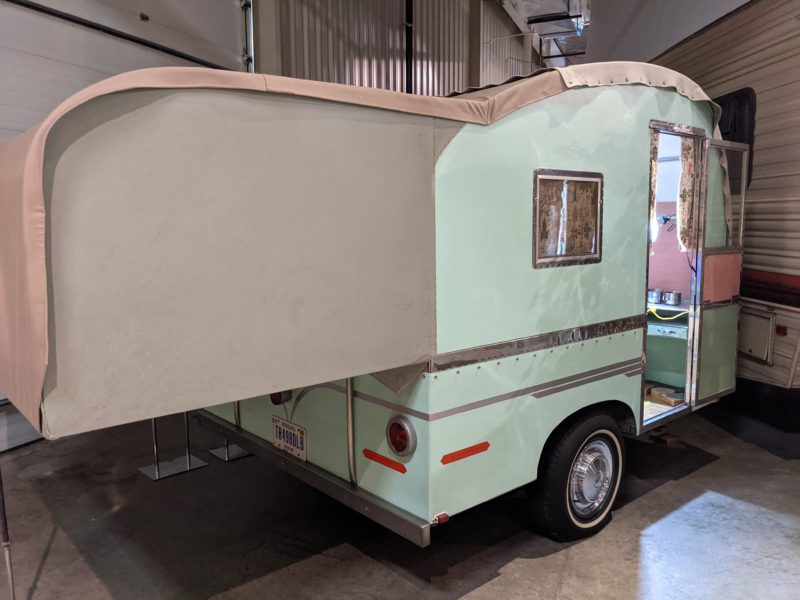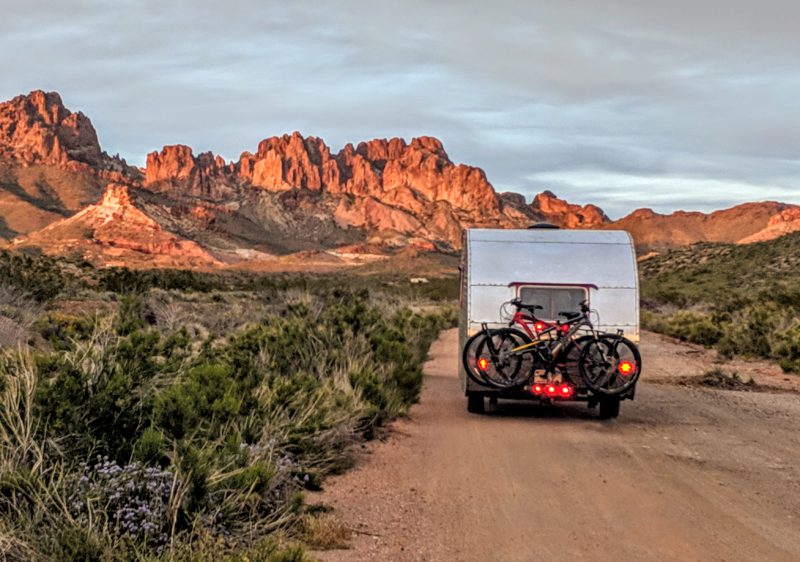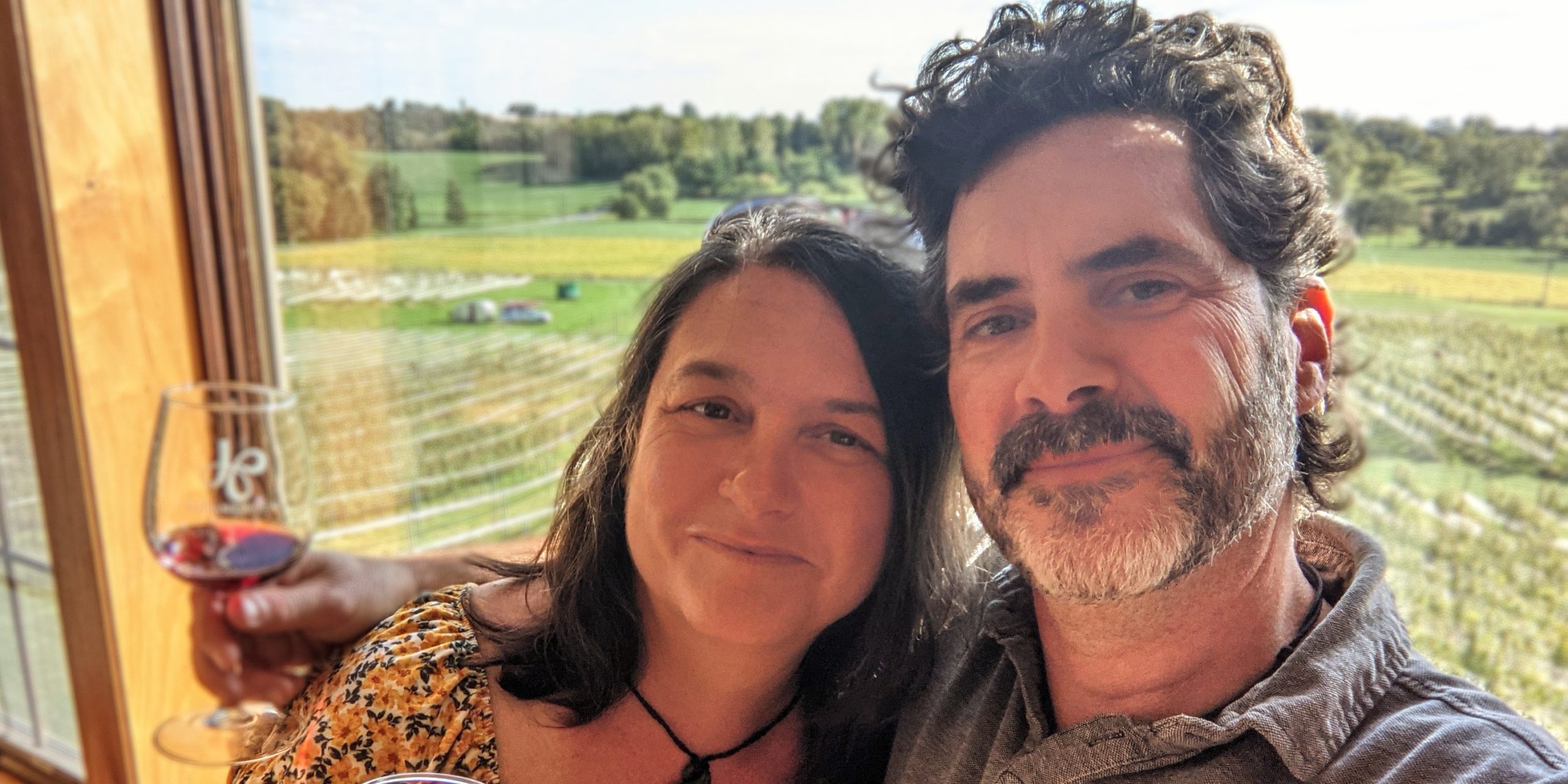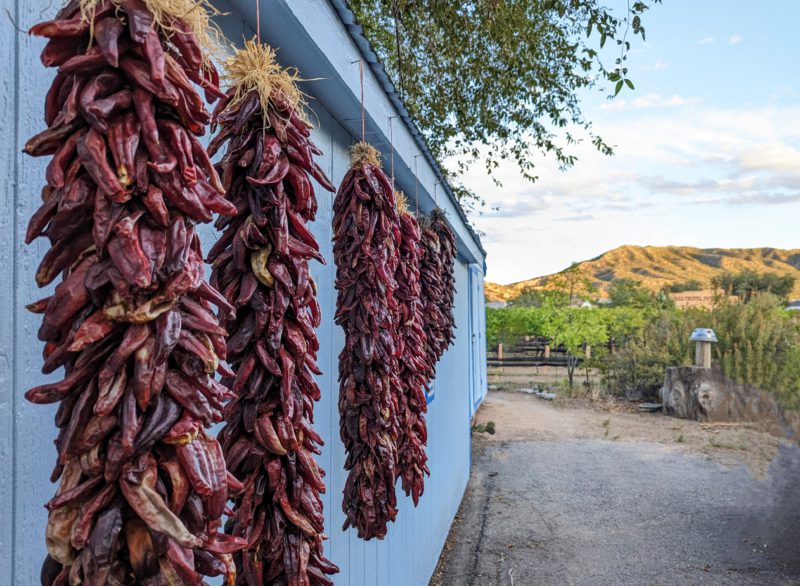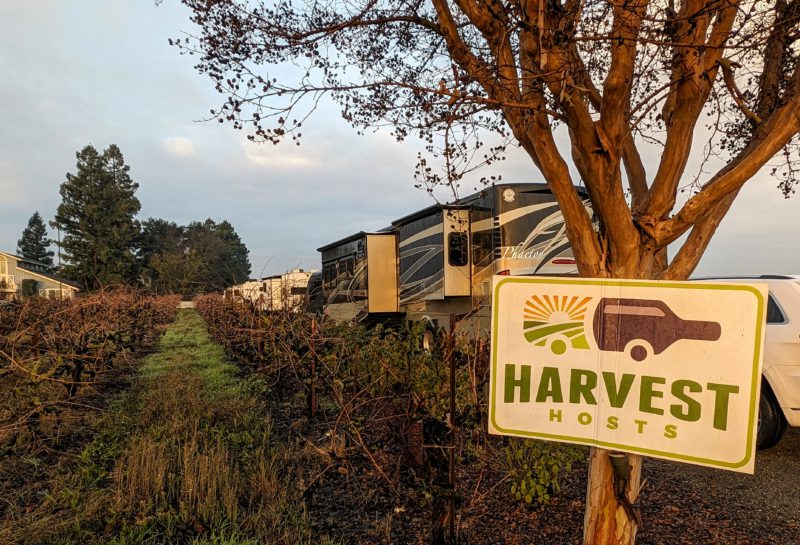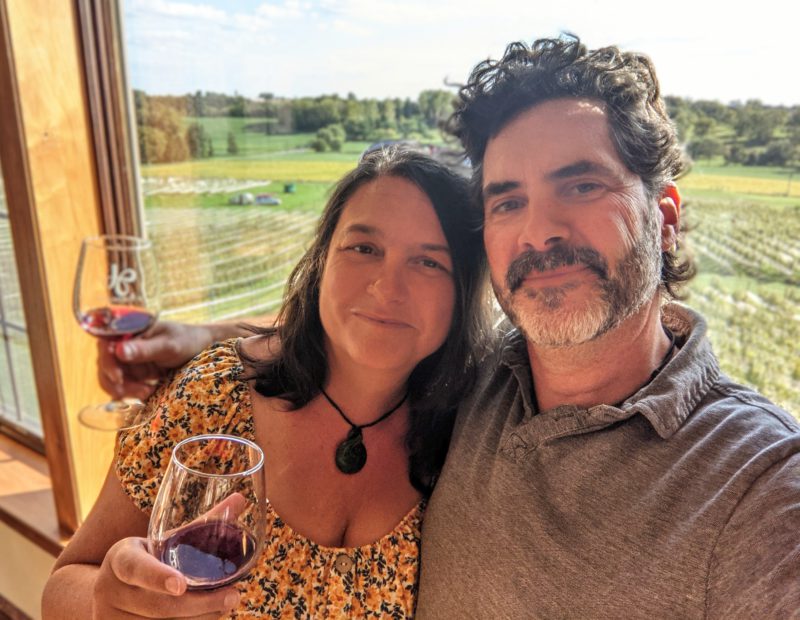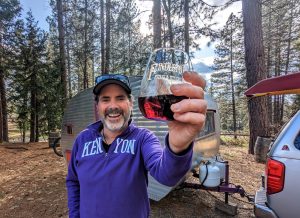The concept of food from heaven is a cross-cultural concept — especially to the hungry! And if there’s one type of regional food — aside from pizza — that everyone loves, it’s gotta be from the Southwest and the land of roasted chiles. Call it Mexican, Southwestern, Tex-Mex, what you will, these Southwestern RV recipes by any other name taste just as sweet. (Or maybe Shakespeare would allow us, “spicy.”) Moreover, you can enjoy them any time of year — whether you’re snowbirding through the winter or getting festive for Cinco de Mayo.
Now, when I say chiles, I’m not talking about devouring a stack of jalapeno poppers. (Or, about playing with fire and eating a Carolina Reaper.) I’m talking about fresh Hatch chiles and an open flame for some of the best Southwestern RV recipes you’ll ever taste.
So, here are a few of our favorite recipes from our Southwestern camp cooking collection. Now, let’s get cookin’!
Hatch Chili Enchilada Sauce

A Quick Word on Chili Sauce Choices
It’s a simple question that stands in for the state motto of New Mexico: Red? Green? Or Christmas? For those not in the know, this question, asked at just about any kind of New Mexican restaurant, is about chili sauce.
For the uninitiated, here’s a translation: Do you want just one kind of chili sauce (red or green) or a more festive blend of red and green together (Christmas)? For the record, there’s no wrong answer.
Lessons from New Mexico
We were making dinner with a friend in Taos, New Mexico, and when she suggested enchiladas, we admitted that we might need to run to the store for some sauce. Right away, she stopped what she was doing. She looked right at us like we’d just suggested McDonald’s for dinner. Then she said, “Ummm … so, we don’t eat chili sauce from a can here in New Mexico.”
Now fortunately, after reprimanding us, she then reached for her stash of Hatch chili powder and introduced us to a whole new world. We’ve never gone back to canned sauce since because we always have these simple ingredients with us.
Ingredients
3 cups water
1.5 teaspoons garlic powder
1.5 teaspoons onion powder
1 veggie bouillon cube
1 teaspoon salt
½ cup all-purpose flour
¼ cup Hatch red or green chile powder
Prep Instructions
Put all ingredients in a medium sauce pot and use an immersion blender to mix until silky smooth. Cook over medium heat, stirring until thickened. Can be made ahead of time and stored in a jar. If using green chili powder, add some roasted chopped chili peppers to the sauce after mixing with the blender.
*Recipe adapted from the “Blonde Chicana Bride’s Mexican Cookbook” by Helen C. Keen.
Cheesy Enchilada Pie
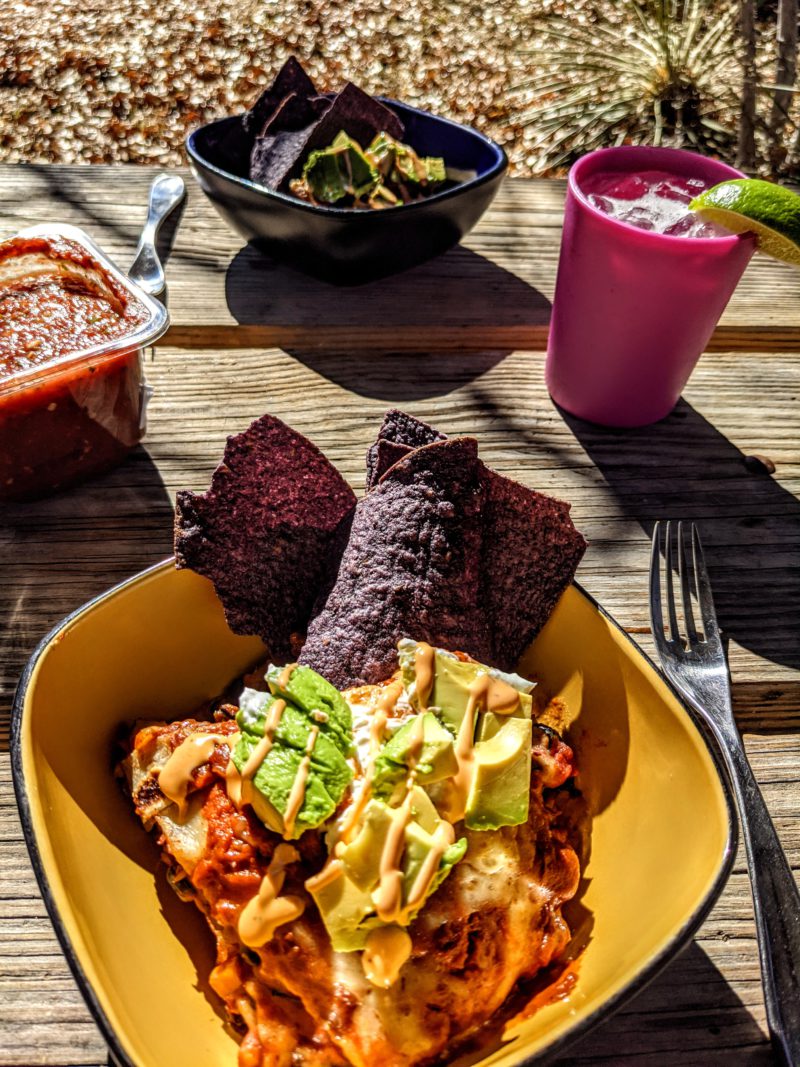
Enchiladas are the perfect way to end a chilly day at camp. Or after a long hike or bike ride. You know — when you are really hungry! Many of the ingredients can be prechopped, mixed, or made before heading out for a camping trip. All that makes it a simple heat, layer, and cook process when you’re ready to dig in. Make it in the RV kitchen or outside on the campfire. No oven required.
Ingredients
1 16-ounce can black beans
1 can diced tomatoes (with chili and onion)
1 16-ounce can seasoned pinto beans or chili beans
1 sweet onion, small
1 red or yellow bell pepper, large
5 baby Portobello mushrooms
½ lb of sharp cheddar cheese, shredded
12 corn tortillas
Enchilada sauce ingredients (from recipe above)
Suggested Toppings: Avocado, sour cream or Greek Yogurt, chopped green onions, and spicy ranch dressing. Then make the enchilada sauce using recipe above and set it aside.
Prep Instructions
For a 10-inch, deep-dish pan.
- Mix and warm – cans of black beans, pinto beans, and diced tomatoes
- Chop and saute – peppers, onions, mushrooms
- Shred – sharp cheddar cheese
- Lightly grill – 12 corn tortillas
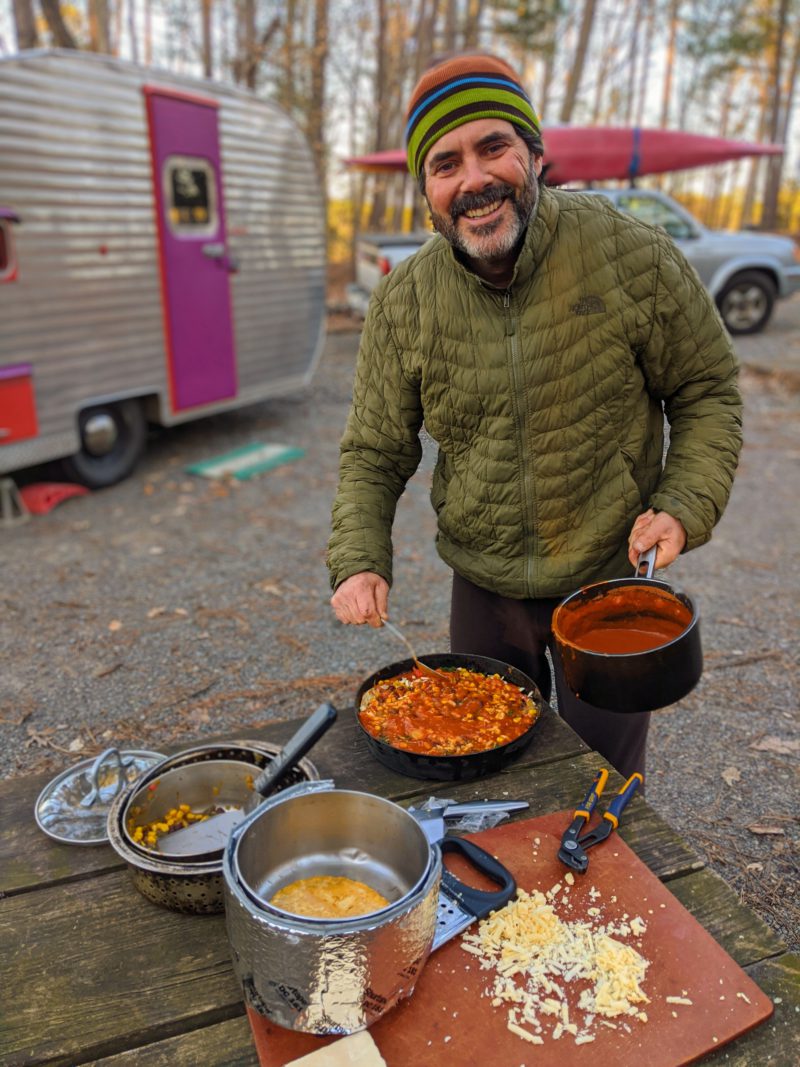
Layer the Ingredients as Follows
Think of this like a lasagna.
- Lightly cover the bottom of the pan with sauce.
- Place three corn tortillas over the sauce (overlapping).
- Cover the tortillas with a 1/3 of bean/tomato mixture.
- Add 1/3 of sauteed veggies.
- Cover with 1/3 shredded cheese.
- Add another thick layer of sauce.
- Repeat these layers two to three more times, depending on the depth of your pan, ending with a heavy ladle of sauce, and sprinkled with cheese.
Since all of the ingredients are warmed or cooked before layering, just cover and heat thoroughly to melt the cheese and heat the sauce until it is bubbling. This usually takes 15 to 20 minutes, turning regularly to even out the heat. This can be cooked over an open fire or on a two-burner stove (resting in between the two burners). Makes enough for six to eight hungry campers!
Spicy Cheesy Corn Fritters
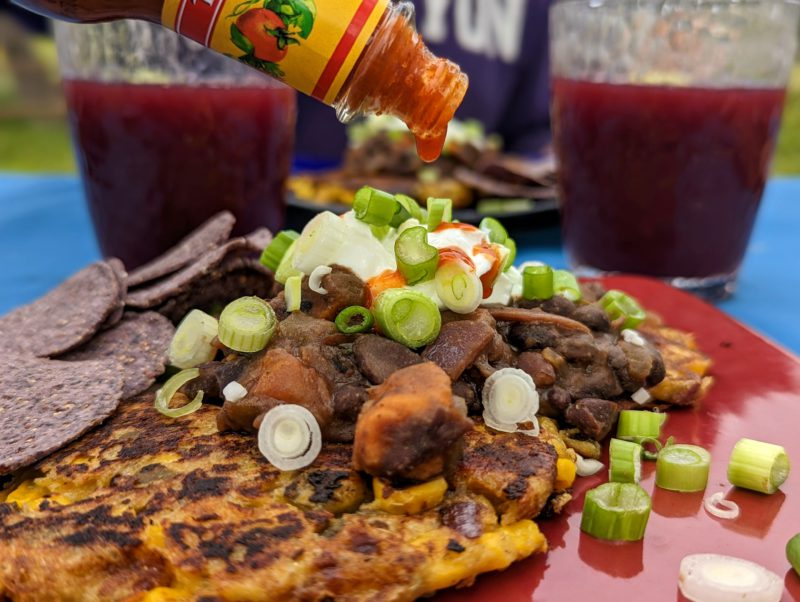
Spicy and savory, balanced with a hint of sweetness from the corn and loaded with texture, we devoured this side dish as the main event — topped with spicy chili or black beans, and hearty doses of sour cream, salsa, and green onions.
Ingredients
Mix These WET …
1 egg
3/4 cup milk
1/2 cup cheddar cheese, grated
1 15.5-ounce can of corn, drained
1 small can of diced Hatch green chilies, mild or spicy (or 1 or 2 chipotle peppers in adobo sauce for a smoky rich flavor)
1/4 red onion, chopped and sautéed
Then Mix These DRY
1/4 cup yellow cornmeal
3/4 cup all purpose flour
1/2 teaspoon baking powder
2 teaspoon oregano
1 teaspoon cayenne pepper
2 teaspoon garlic powder
2 teaspoon crushed red pepper flakes
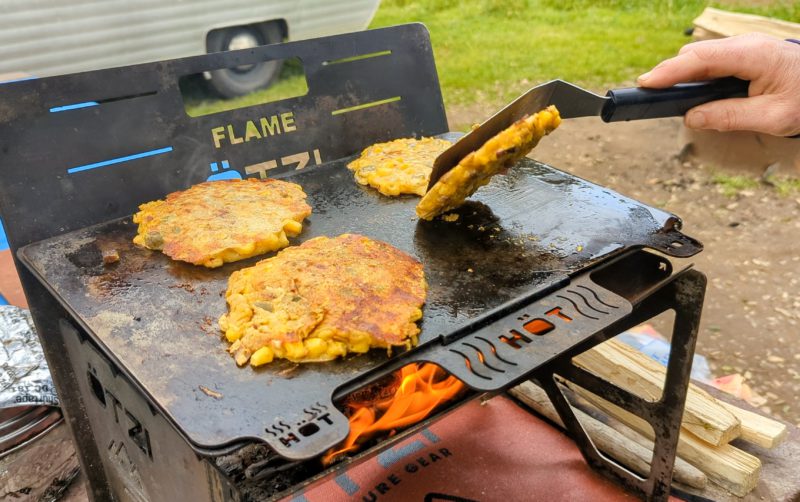
Thoroughly mix wet and dry ingredients together. Generously grease pan or griddle with olive oil. Pour 1/4 cup of batter on griddle, much like you are making pancakes. Cook three to five minutes per side, and flip when set-up and browned. Flip again when other side is browned and cook for a couple more minutes until middle is firm. Makes about eight fritters.
Suggested Toppings: Chili beans, Greek yogurt or sour cream, chopped green onions, diced avocado, salsa and/or hot sauce
Portobello Mushroom Poblano Pesto Enchiladas … with Chipotle Cream Sauce!
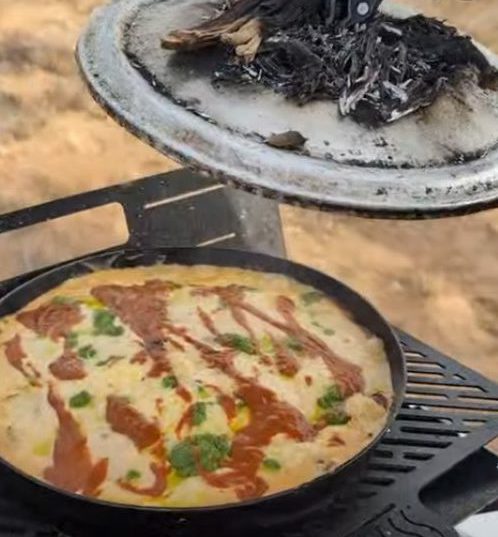
Back in the early Nineties (and just outta college), Hutch slung burritos at a popular Mexican restaurant in Boulder, Colorado to make money to support his triathlon training and racing habit. This recipe is adapted from one of his favorite dishes on their menu. (Which, truth be told, he used to woo Shari during their first few months of dating.) Like any good meal, it’s a bit time-consuming, but worth every messy pot it takes!
Ingredients
3-4 poblano peppers (or jar of roasted peppers)
1 medium Spanish onion
3 large Portobello mushrooms
12 white (or blue) corn tortillas
3 cups 2% or whole milk
4 tablespoon butter or olive oil
4 tablespoon all-purpose flour
1 lbs white sharp cheddar cheese, grated
2 chipotle peppers in adobo sauce
1 8-ounce jar of prepared pesto
Salt and black pepper, to taste
Prep Instructions
You’ll make all the parts of this recipe separately then layer like you would a lasagna in this order (from the bottom up of course) in a Dutch oven, lasagna pan, or Banks Fry-Bake. Then, reheat the entire casserole over the fire, grill, or in the oven until the top layer is bubbling. If using a campfire, be sure to add hot coals to the top in order to heat from the top down. Makes eight healthy servings! As one of our favorite Southwestern RV recipes, we serve this dish with spicy slaw and chili beans on the side.
Step 1: Roast 3-4 Poblano Peppers (over a fire or propane flame). When skin is charred and blistered, wrap hot peppers in a wet paper towel then store in a large plastic bag for about 10 minutes. (This helps with removing the skin.) Then remove all of the blackened skin. It’s a bit messy — but worth it.
Step 2: Make Veggie Filling
1 medium-large Spanish onion, sliced
3 large portobello mushrooms, sliced
3 medium-large poblano peppers, roasted, skinned, seeded, and sliced
1-2 tablespoons olive oil
Combine olive oil, mushrooms, and onions in a large pan. Sauté until vegetables begin to soften, then add pre-roasted poblano peppers. Cook for about two to three more minutes, or until all veggies are tender. Set aside but keep warm.
Step 3: Lightly Toast 12 White Corn Tortillas. Set aside but keep from drying out.
Step 4: Prepare Chipotle Cream Sauce. Make this sauce last because it needs to stay warm to not separate.
3 cups 2% or whole milk, warmed (until you see the small bubbles forming on the sides)
4 tablespoons butter or olive oil
4 tablespoons all-purpose flour
1 cup white sharp cheddar cheese, grated
2 chipotle peppers in adobo sauce
Salt and black pepper, to taste
Melt butter in a saucepan. Stir in the flour and cook, stirring constantly, until the paste cooks and bubbles a bit, but don’t let it brown (about two minutes). Add the WARMED milk, continuing to stir as the sauce thickens. Bring it to a boil. Add the cheese, cook, stirring for two to three more minutes. Using an immersion blender, blend in the chipotle peppers with about one to two tablespoons of the adobo sauce.
Step 5: Layer All Ingredients
Begin layering your baking pan, dutch oven or Bank’s Fry Bake pan in the following order:
- Chipotle cream sauce (enough to coat the pan)
- Corn tortillas (pre-toasted and overlapping, some gaps will happen)
- Pesto sauce (small smear on top of tortillas)
- Veggie filling
- Cheddar cheese
- Repeat layers at least 3-4 times, depending on the depth of your baking dish
- Final layer: Chipotle cream sauce then sprinkle remaining cheese on top.
Ridiculously Easy Veggie Chili
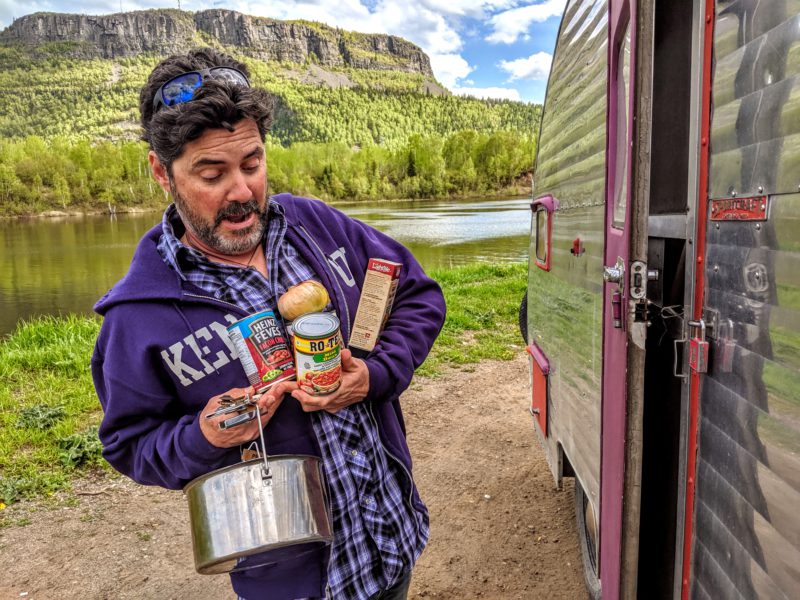
It happens all the time. Your amazing hike took longer than expected, and you arrive back at camp ravenous. Bust out the beans and have a warm, hearty dinner on the table in 20 minutes. Before everyone has changed their clothes and settled in, dinner will be served. Serves four hungry campers — in a hurry!
Ingredients
2 cans of chili beans in mild or medium sauce
2 cans of seasoned black beans
1 can sweet corn
1 can of fire roasted chopped tomatoes (or 2 cans of Rotel)
1 medium onion, chopped
½ pound of Impossible burger or veggie crumbles, cooked
1-2 tablespoon olive oil
1 bag of shredded cheddar cheese
1 small tub of plain Greek yogurt
Hot sauce
Note: Don’t forget the can opener for this one!
Prep Instructions
- Make this on the campstove or over a campfire.
- In a large pot (or Dutch oven if cooking over a campfire), saute onion in olive oil.
- When translucent, add burger or crumbles and saute until browned.
- Add all beans and chopped tomatoes.
- Add hot sauce if you want it spicy.
- Simmer for about 12 minutes.
- Serve up and top with cheese, sour cream or Greek yogurt, and tortilla chips.
Spicy Tamale Bowls
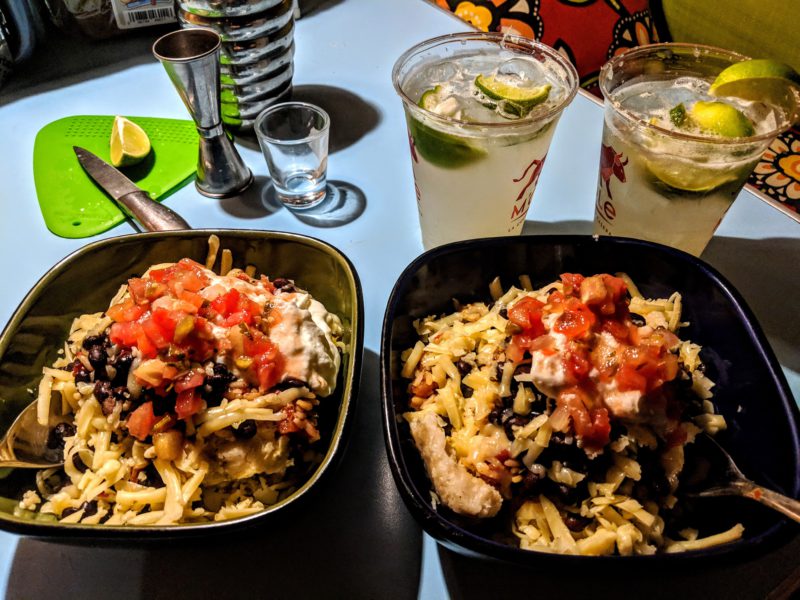
A few years ago, we were living the #vanlife in Hawaii for a few weeks. We rented a classic V-dub Vanagon. It was slow, underpowered, smelled a little funny, and if you took a left turn just a little too fast, the oil sensor alarm would go off. (In other words, it was AWESOME!)
We cruised the island, boondocked in some places, camped at Haleakala, and found some simply stunning roadside tamales. Outside of the Southwest, these were seriously the best we’ve ever eaten. But no matter where you get (or make) your tamales, once they are prepared, this has got to be one of the easiest and tastiest Southwestern RV recipes around.
Prep Instructions
- Steam tamales, two per person
- Heat 1 can of black or chili beans (a can works for two people).
- Top with beans, salsa, avocado, diced Hatch green chilies, and Greek yogurt or sour cream.
Enjoy Southwestern RV Recipes on the Road
We hope these Southwestern RV recipes spice up your RV camp cooking and your future desert adventures inspire you to try some fantastic culinary feats of your own design! S
